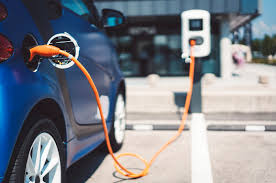
Electric vehicle supply equipment, abbreviated as EVSE, is the apparatus that supplies an electric car with electricity (EV). They are sometimes referred to as charging stations or charging docks, and their primary function is to supply electric power to the car, which is then used to recharge the vehicle’s batteries. You must know electric vehicle charging station requirements.
The electrical vehicle supply equipment market contains the electrical conductors, associated equipment, software, and programming interfaces responsible for delivering energy to the vehicle effectively and securely.
Electric vehicle supply equipment (EVSE) can be categorized as Level 1 (AC voltage of 120 volts), Level 2 (AC voltage of 240 volts), or DC Fast Charger (480 volts DC and higher). EVSE units may be separate from the power grid, such as those used for private charging, or they can tap into an existing electrical service.
A direct current (DC) station is a connection point device that provides a DC power source at an appropriate voltage and current to recharge an electric vehicle.
Applications of electric vehicle supply equipment
- Commercial fleets: EVSE units must be able to provide power to multiple vehicles simultaneously. EVSE units are used for various applications in municipal fleets, including public fleets and special vehicles such as garbage trucks, school buses, and ambulances.
- Residential: EVSE units are used to supply power to residential or light-duty commercial vehicles that are running on a single charge (e.g., RVs, golf carts, and electric scooters). Power can be supplied by plugging in a charging cable or using inductive charging.
- Service: EVSE units supply power to vehicles stored in a parking lot (e.g., taxis and rental cars). Some EVSE systems feature a wireless remote display screen so that customers can see the status of their vehicles, such as the amount of charge or whether the battery is fully charged.
- Multi-tenant buildings: EVSE units supply power to vehicles that tenants or visitors park (e.g., in an office parking lot or a university campus). Some EVSE systems feature a wireless remote display screen so that customers can see the status of their vehicles, such as the amount of charge or whether the battery is fully charged.
- EVSE installations in non-residential applications should include conventional power distribution and protection features, such as metering, relays, and control.
- Workplace charging: Workplace charging is a very important topic as it allows people to make a few stops during their commute to charge their car battery. Also, workplace charging has significant environmental benefits, such as reducing idling and energy consumption in vehicles. To sell and install EVSE equipment, manufacturers and installers must understand the various federal, state, local, and other government regulations that apply. Some of these regulations are applicable only in certain regions.
- Retail establishments: EVSE equipment can only be installed and connected to an EV if the installation is approved by the business where the EVSE equipment is installed. This approval generally falls under the jurisdiction of local ordinances and building codes.
- High-voltage commercial buildings: EVSE products are generally prohibited in high-voltage installations, such as wastewater treatment plants, petroleum refineries, chemical plants, electrical transmission lines, etc.
- Off-street parking garages: EVSE units should not be installed in off-street parking garages unless the parking garage is equipped with a circuit breaker for use in the event of a power failure. Some jurisdictions allow the installation of EVSE equipment in off-street parking garages, however, if all requirements of the ordinances or codes are followed.
Conclusion:
EVSE equipment is simple and easy for consumers and retail establishments. The equipment is equally important to be safe, reliable, and durable. The onus of designing such equipment lies with the manufacturer.





More Stories
Moon | Cartype
Rivian, Mercedes-Benz Joint Venture Paused
We Blew Up Our $5000 Drag Car ~ Can We Getting Fixed In Time? – Humble Mechanic